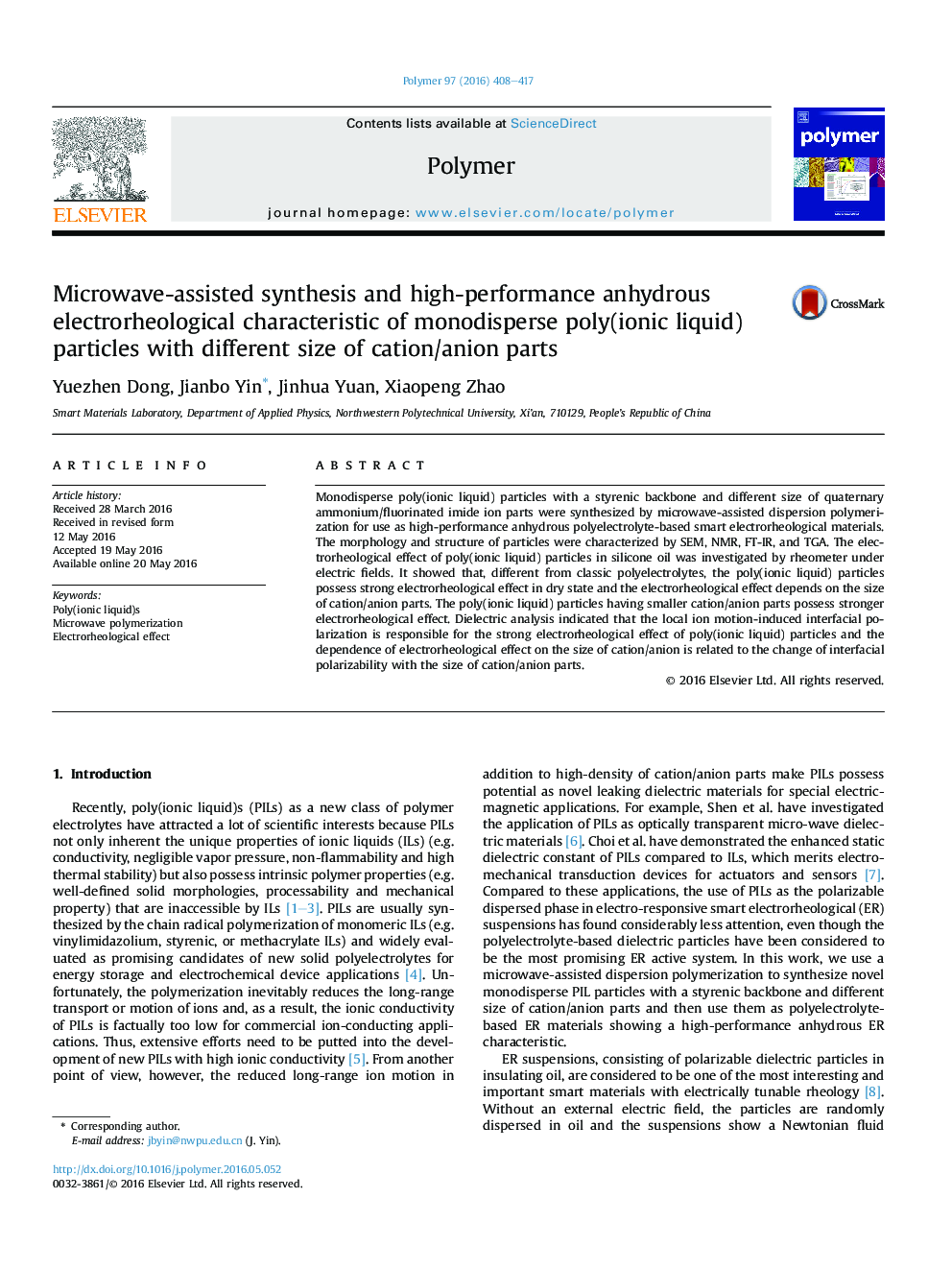| Article ID | Journal | Published Year | Pages | File Type |
|---|---|---|---|---|
| 5179255 | Polymer | 2016 | 10 Pages |
â¢Monodisperse PIL particles with different size of anion/cation parts are synthesized.â¢The PIL particles show strong anhydrous ER characteristic under electric fields.â¢The ER characteristic of PIL particles depends on the size of cation/anion parts.â¢The strong ER effect is attributed to the interfacial polarization of PIL particles.â¢The interfacial polarizability of PILs is related to the size of cation/anion parts.
Monodisperse poly(ionic liquid) particles with a styrenic backbone and different size of quaternary ammonium/fluorinated imide ion parts were synthesized by microwave-assisted dispersion polymerization for use as high-performance anhydrous polyelectrolyte-based smart electrorheological materials. The morphology and structure of particles were characterized by SEM, NMR, FT-IR, and TGA. The electrorheological effect of poly(ionic liquid) particles in silicone oil was investigated by rheometer under electric fields. It showed that, different from classic polyelectrolytes, the poly(ionic liquid) particles possess strong electrorheological effect in dry state and the electrorheological effect depends on the size of cation/anion parts. The poly(ionic liquid) particles having smaller cation/anion parts possess stronger electrorheological effect. Dielectric analysis indicated that the local ion motion-induced interfacial polarization is responsible for the strong electrorheological effect of poly(ionic liquid) particles and the dependence of electrorheological effect on the size of cation/anion is related to the change of interfacial polarizability with the size of cation/anion parts.
Graphical abstractBy a microwave-assisted dispersion polymerization, monodisperse poly(ionic liquid) particles with a styrenic backbone and different size of quaternary ammonium/fluorinated imides ion parts are synthesized. Under electric fields, the poly(ionic liquid) particles possess strong electrorheological effect in the absence of water activator and the electrorheological effect depends on the size of cation/anion parts.Download high-res image (151KB)Download full-size image
